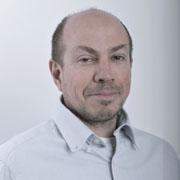Prof. Erez Etzion is an experimental particle physicist who works on fundamental studies of the Standard Model (SM) of particle physics and searches for extensions or deviations from the theory. In recent years has been focused on studies within the international ATLAS Collaboration at the CERN Large Hadron Collider. The research spans a variety of subjects such as studies of the strong interactions of heavy quarks, searches for heavy resonances decaying into leptons, jets or top quarks, studies of jets physics, searches for the so-called exotics extensions to the SM, studies of the properties of the Higgs Boson, discovered by the ATLAS Collaboration in 2012, and searches for Dark Matter (DM) with ATLAS and recently with the SENSEI (Sub Electron Noise Skipper-CCD Experimental Instrument) experiment at SNOLAB. In addition, develops novel detectors and technologies aiming at utilising particle physics techniques in other fields, e.g. Nano Sattelites, medical treatment, geology, archeology.
Research achievements include: exploration of the fundamentals of particle physic with colliding proton beams at unprecedented centre of mass energies from 7 up to 13 TeV. The ATLAS highlight is the discovery of the Higgs particle in 2012 which led to the 2013 Nobel prize in Physics to the theorists who predicted its existence, (one of the two, Francois Englert, is a Sackler Professor at the TAU School of Physics). A key part of the ATLAS detector is the muon endcap trigger system which was built in Israel and tested by Etzion both at the lab at TAU and at CERN. In addition he led the ATLAS programs of searching for DM and Physics Beyond the SM, and Higgs related extensions to the theory, setting severe constraints on the existence of large number of physics models, superseding many pervious experimental bounds
Future directions include: using the much larger data samples expected from the LHC to improve our understanding of the SM in general, and specifically of the Higgs Boson properties. Design and construct MATHUSLA, a very large scale experiment above the LHC ring looking for long-lived-particles, predicted by many extensions of the SM, escaping detection of the main detectors.
Search for Dark Matter candidates with the SENSEI experiment. Its larger scale, under construction, will take data at SNOLAB, a deep underground laboratory in Canada, reaching anunprecedented sensitivity to low mass dark matter candidates
Launch a radiation detector to the Internationl Space Station to be followed by launch of satellite-borne detector
Use cosmic ray to map the underground of the archaeology sites



